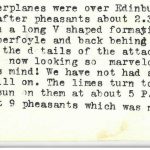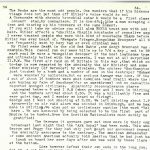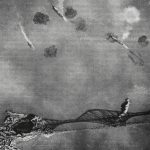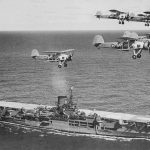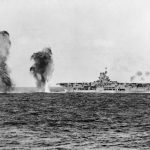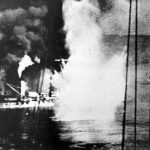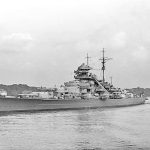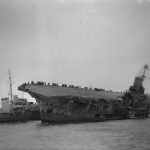“If you will take my advice you will also NEVER trust men with odd facial hair. Hitler affects a “charkie(sic) Chaplin moustache of repulsive aspect. I never trusted people who wore this kind of moustache YEARS before Hitler was ever heard of. “Newgate fringes, Mongolian droopers” all these are frequently worn by bery(sic) bad or even criminal men!”
Regular readers of our blog will know that Thomas is never afraid to hold back an opinion, and does so again here. He is of the belief that if people had perhaps been more wary of men sporting “odd facial hair”, they could have been on to Hitler long before and perhaps avoided World War Two! He has mentioned Hitler’s Charlie Chaplin-esque facial hair previously, and this entry highlights again Graham’s personality, and his trying to make light at a time of dark at Hitler’s expense (whilst also stereotyping all those with “odd” beards or moustaches!).
Back to the present day, and in amongst his day of shooting pheasant and enjoying the autumn colours in the afternoon sun, Thomas had been in a state of high alert after noticing three planes flying nearby.
After his months of dreaded anticipation of the threat from the air and his continual warnings of the danger throughout his entries, Thomas’ fears become a reality on this date, and possibly a lot closer to home than he may have anticipated. An eyewitness account of the attack on navy vessels in the Firth of Forth, where HMS Southampton was targeted and HMS Mohawk was hit by German bombers can be read here. The Germans lost a handful of their bombers during the mission who had been shot down, but luckily no civilians were caught up in the attack.
As he had suspected, the planes above Stirling that Thomas had seen earlier in the day were reported to have been reconnaissance planes, before bombers arrived a short time later. He notes that there was no warning either in Stirling or Edinburgh to warn of the approach by the Luftwaffe.
Thomas proceeds to mention reports from Germany about the sinking of the British aircraft carrier HMS Ark Royal, and conflicting reports being received from America. The ship was claimed to have been sunk on many occasions by the German navy as part of their propaganda campaign, evidently one of these having been the previous evening going by Graham’s account.
The ship had had an illustrious career, undertaking operations from the Atlantic to the Mediterranean and North Seas, and was involved in many infamous events in the first years of the conflict. Originally operating in “hunter killer” groups on the outbreak of war, the Ark Royal was attacked by U-39, narrowly avoiding disaster before again being targeted by German bombers at the end of September 1939 whilst aiding a damaged British submarine; the Spearfish, back to port. Avoiding a torpedo by 30 feet, the German pilot believed the ship to have been hit and this was the first of many of the aforementioned premature reports of the ship’s demise.
Operations as part of the Norwegian campaign followed, before HMS Ark Royal was redeployed to the Mediterranean. Active in the controversial attack on Mers-el-Kebir, before the navy turned their attention to Italian targets, the ship was again attacked during the Battle of Cape Spartivento, enduring another close call as can be seen from the image below. At the end of May 1941, aircraft from the Ark Royal spotted the famous German battleship, the “Bismarck”, and the vessel was instrumental in its sinking several days later.
Unfortunately, HMS Ark Royal was indeed finally sunk by the Germans in November of that year during Malta convoy missions. Due to captain Loben Maund prioritising the welfare of his crew, all those aboard were saved apart from one fatality who had been killed in the initial attack by U-81. Efforts were made to save the ship, but to no avail and she sank the following day, east of the coast of Gibraltar.
Sources used:
www.iwm.org.uk
www.wikipedia.org
www.ww2today.com
